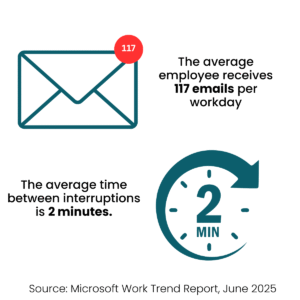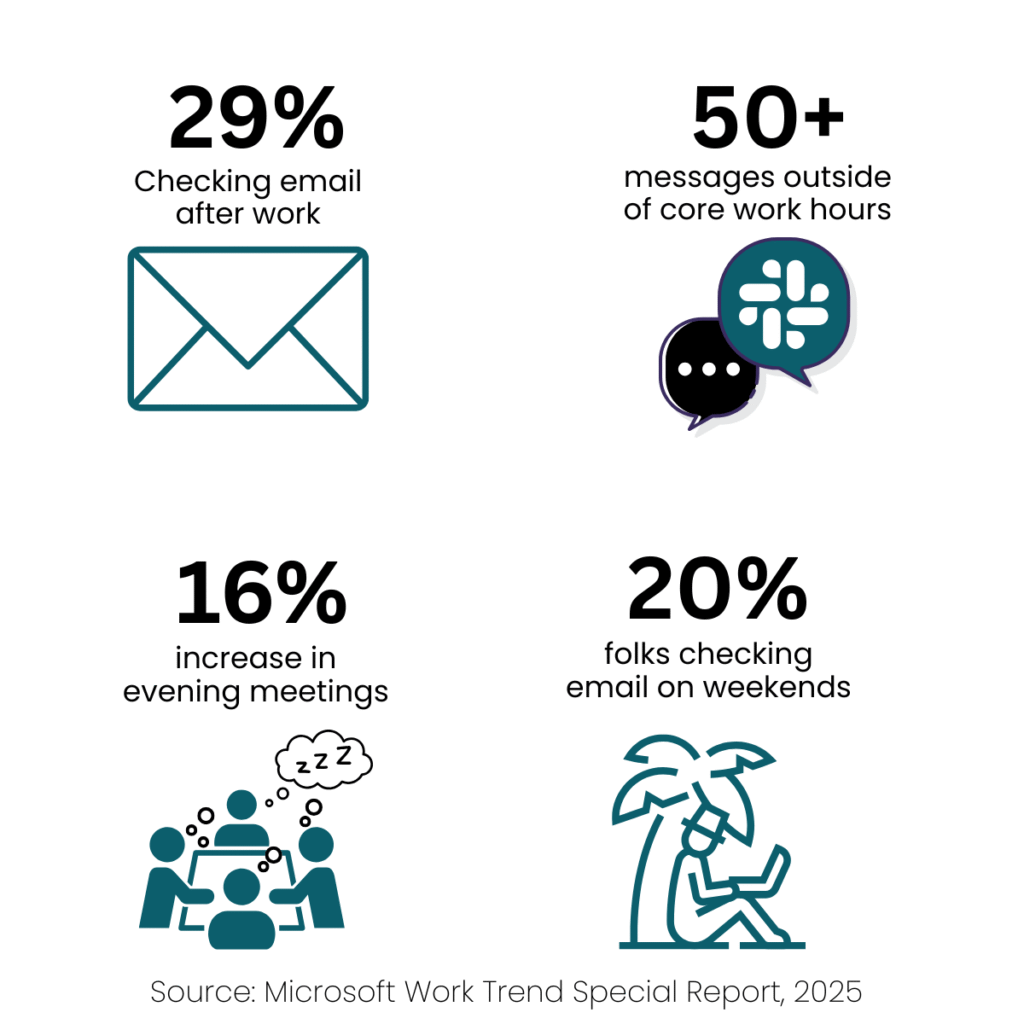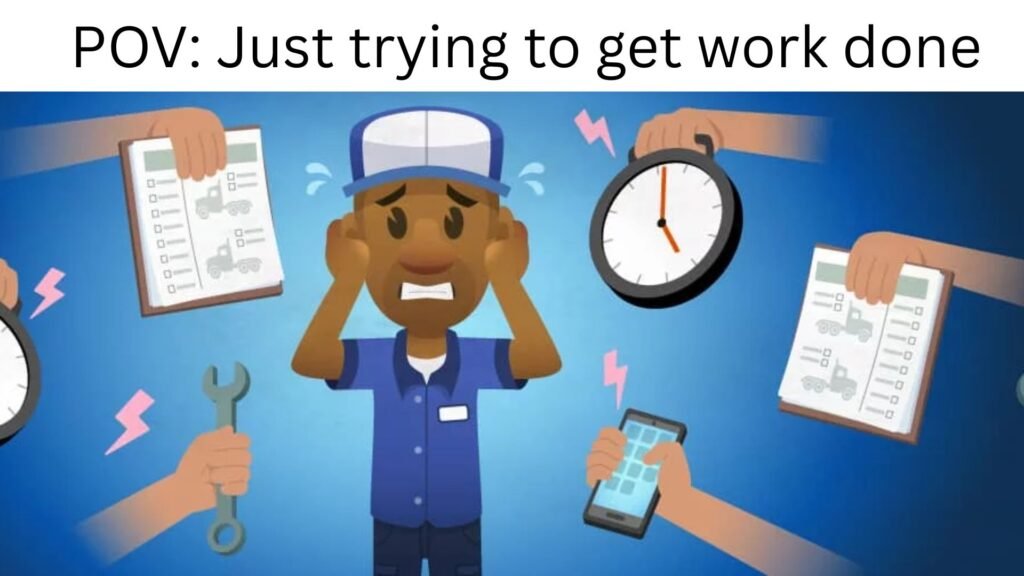A Tough Love™️ Letter to Managers (and Their Leaders) A therapist’s note you might want to forward to your boss.
Today, I’ve got another love letter for managers, but this one leans more into Tough Love™️. Maybe some of you will even pass it along to your company’s leadership, like a note from your therapist, to get the support you actually need to be a great manager.
What Microsoft’s “Infinite Workday” Study Tells Us
I can’t count how many people sent me Microsoft’s recent study on the Infinite Workday (linked below but summarized here). I assume it’s partly because they knew I’d silently scream into the void of late-stage capitalism (spoiler alert: it wasn’t so silent)… but also because they figured I’d have something to say.
Good news, dear reader: I do.
If you caught my last post, you know I’ve been thinking about how many people suddenly seem to have way too much to do. According to Microsoft’s telemetry data (gathered anonymously via product usage), it’s not just a workload problem, it’s also an efficiency problem. Check this out:

How is anyone supposed to get focused work done?
We already know multitasking tanks productivity and taxes the brain. I’ll link a study below that dives deeper into multitasking, but …
Interruptions & the Neurodivergent Brain
Now, add a neurodivergent brain to the mix. One reader wrote to me recently:
“I’m neurodivergent, and I feel like it takes me significantly longer to get the same amount of work done… The only longterm plan I can think of is trudge through the misery of daily life until I absolutely can’t take it anymore, and then quit society lmao.”
How many others are steeped in shame and self-blame for something that’s not their fault? What if the problem isn’t them, but the way we work?
Meetings Are a Mess (But That’s a Whole Other Post)
Microsoft’s report also shows that meetings often happen ad hoc, right in the middle of people’s most productive hours. This is where I take off my therapist hat and dust off my cape, because at a once-beloved tech company, I was known as The Meeting Slayer.
I helped teams hold more intentional, inclusive, and effective meetings. That included figuring out who should be there, what outcomes were expected, and how those outcomes should be documented. If your team needs help here, as long as the cape’s out…
Work Is Creeping Into Life
Let’s talk about work creep. (No, not that creep, you should report that one to HR.)
I mean the way work is seeping into people’s off-hours. You know I’m a big believer in setting boundaries between work and life. But I don’t want to put the honus on the individual when the truth is: there’s still a lot of after-hours work happening. Check this out from the same Microsoft report.

Managers, You Set the Tone
Here’s where the Tough Love comes in.
Some colleagues and I were recently talking about those email signature disclaimers, you know, the ones that say: “My work hours may be different than yours; no response expected outside of yours.”
That’s fine for some, and I might use one myself. But I work for myself. If I had employees, I’d take a different approach.
Because if you’re a manager, you hold more power than your direct reports.
You can say “no pressure to respond,” but a message from the boss still spikes cortisol. And let’s not forget: cultural norms around hierarchy vary. I lived in Japan, where status and power carry different weight, but even within the same culture, people grow up with different ideas about how to respond to authority.
So if you have to send that late-night note, are there ways to delay delivery or better manage your timing? What worked when you were an individual contributor might not work now that you manage people.
And if you’re struggling to get your own work done and support your team? It’s time to have a conversation with your manager. Here’s the part for your company leadership:
Companies can spend all the money in the world on manager training, but it won’t matter if managers are still expected to produce at the same rate they did before leading a team.
This Isn’t a Case for More AI
Microsoft’s report also says AI might help manage the overload. But let me ask, loudly:
If we find “smart” uses for AI, will we just use them to overwork people even more?
I’d love to hear your thoughts: How are you handling the overload? What do you I hope I cover next? You can answer anonymously here.
P.S. If you’re in CA and looking for a therapist who gets it, I have a couple of openings. Contact me to schedule a free consultation.
P.P.S Leading a team and want help creating Team Working Agreements so everyone can get the focus time they need? I’d love to support you.
Resources:
Microsoft, Breaking down the infinite workday
Verywell Mind, How Multitasking Affects Productivity and Brain Health
